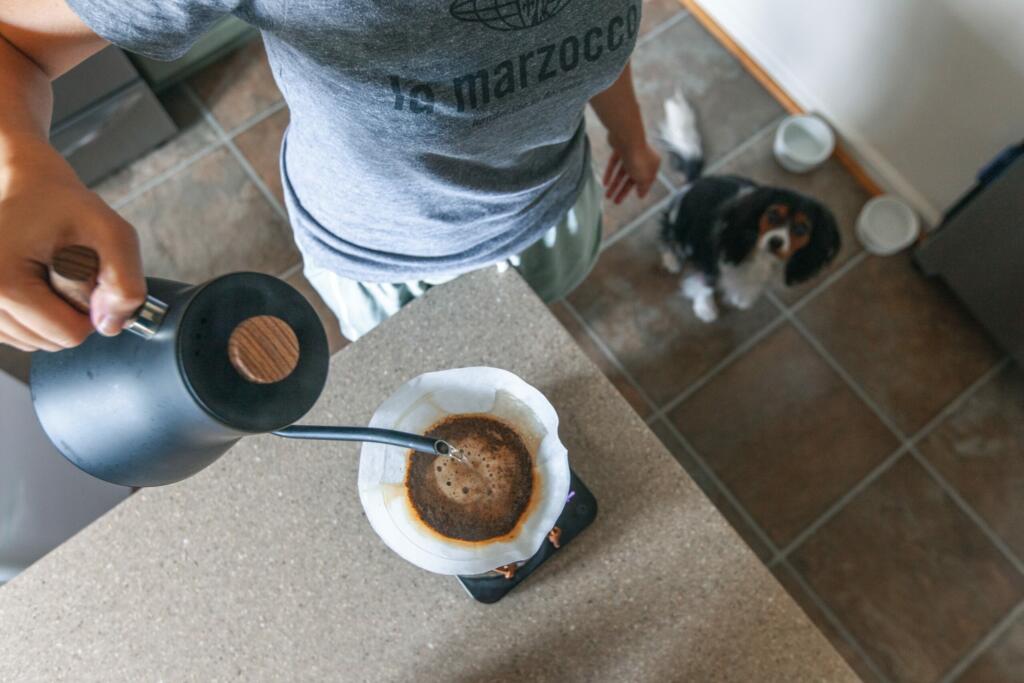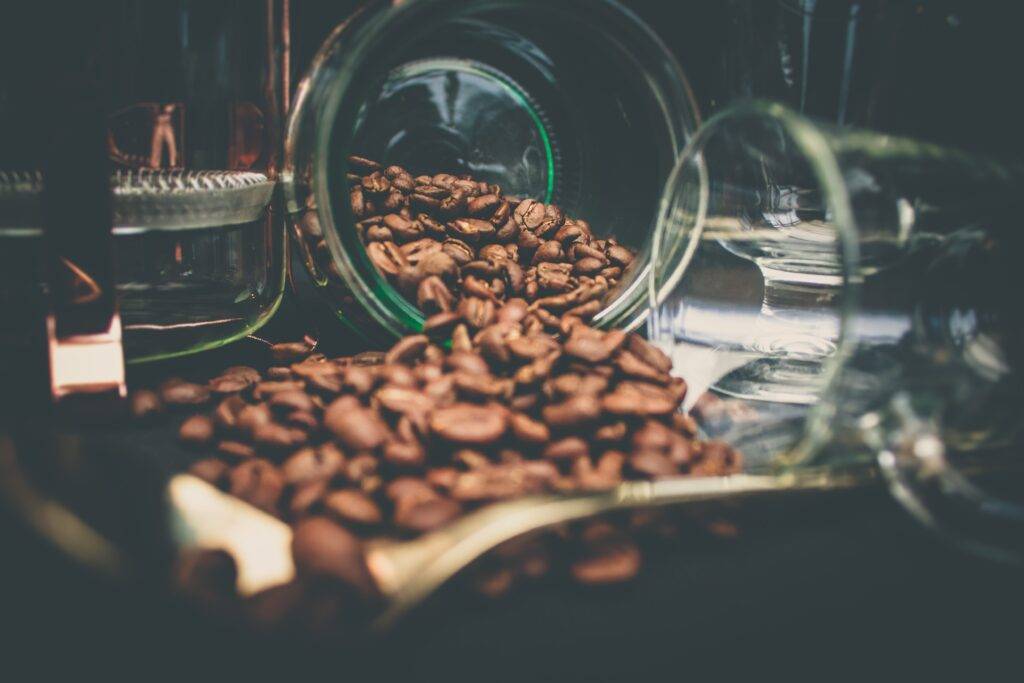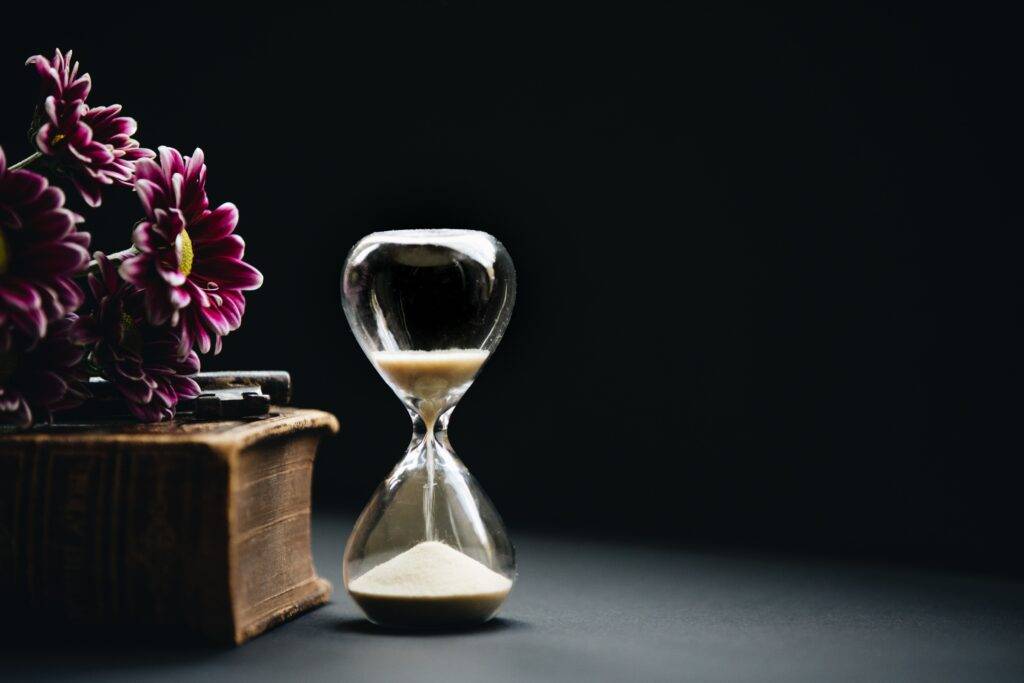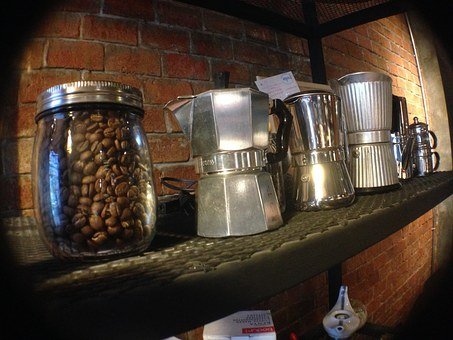If you settle for no less than some fresh coffee, you may be the type to roast your beans at home. But did you know that coffee can be too fresh for your own good?
Table Of Contents
−- What is coffee degassing?
- Why does coffee need to degas?
- Why is there CO2 in coffee?
- How long does it take for beans to degas?
- How to know when degassing is enough?
- How to keep your roasted coffee fresh?
- Why you shouldn’t pre-grind your beans to increase degassing!
- What happens once beans have degassed?
- Final step
Don’t fret though! Degassing your coffee can easily fix this. To learn more about this, read on!


What is coffee degassing?
Once the coffee is roasted, degassing naturally happens. This is when the beans start to lose and release gases, primarily carbon dioxide, formed inside during roasting.
A carbon dioxide level that’s just right in your coffee can easily give you better flavors. On the other hand, too much of it can also ruin the taste. Coffee beans that are brewed without degassing properly can give you a coffee that’s not as pleasant because the gas will actually escape in small bubbles while brewing.
“These air pockets can disrupt the contact between the coffee grounds and the water, leading to an uneven extraction of the flavor and aroma compounds in the dry coffee,” Perfect Daily Grind said.
For a successful home roasting, make sure to not skip this step.
Why does coffee need to degas?
Coffee needs to be degassed for a specific reason: carbon dioxide in a batch of freshly roasted coffee beans is released when it enters hot water for the first time. You may have noticed the coffee bubble blossoming up. This is the gas that escapes your ground coffee.
Although this gas helps to produce a pleasant cream on top of your espresso, too much of it can prevent the water from extracting your beans evenly. The outcome could be a flat-tasting, acidic cup. You’re not going to get all the delicious flavor notes that formed during roasting.
Why should i bother degassing my coffee?
If the coffee is not properly degassed prior to grinding, small bubbles will appear during the brewing process. This is because carbon dioxide is repelled by water. The result is uneven flavor extraction and, ultimately, coffee with a less than optimal taste and profile. Some described the taste as sour.
Taking the time to degass your coffee properly allows the hot water to extract the aromatics and oils from the grinds. It’s going to be worth the wait in taste.
Why is there CO2 in coffee?

During roasting, coffee beans undergo several different chemical reactions. Complex carbohydrates are broken down into smaller molecules, beans begin to brown, and a lot of water vapor and carbon dioxide is generated.
Why do coffee beans release CO2?
A lot of chemical reactions take place during the roasting process. The heat breaks down complex carbohydrates into tinier molecules which results in vapor and carbon dioxide and this causes the browning of the beans. The gas buildup creates pressure that eventually breaks the cell wall of the beans, thus, the crack.
The most critical chemical reaction is at the end of the roasting process, since this is when sugar conversion occurs. When the energy is emitted, the gas is generated.
But, isn’t carbon dioxide not food for you?
Carbon dioxide in your beans is not a bad thing: it plays an important role in the consistency of your coffee. It is an indicator of freshness, plays an important role in shelf life and packaging, affects the extraction process, is involved in the formulation of cream and can affect the sensory profile of the cup.
How long does it take for beans to degas?

Degassing depends on different factors: drying process, harvesting technique, roast type, and bean size. It can take anywhere from 2 to 12 days, here’s a few facts:
- The first 24 hours is when a bulk (approximately 40%) of CO2 leaves the bean.
- Darker roasts typically degas faster than lighter roasts.
- Longer roasts coffee beans typically degas faster than faster roasts.
A lot of gas would be lost in the first few hours after roasting. You will get the full flavor of a dark roast in a French press within 72 hours. Lighter roasts are going to take longer. You may be looking for lighter roasts for up to a week or for quick-extraction brewing methods. Espresso takes the longest time. With espresso, you’ll get the best extraction anywhere from 7 to 12 days after roasting.
If you buy a new roast of fresh coffee, you will learn the perfect degassing period by simply brewing a cup every day and taking note of how many days off the roast you have when you get your best cup. You’ll have the knowledge every time you buy the roast again. Every coffee is different, though, so you’re going to have to do that for every new coffee you purchase.
How to know when degassing is enough?
The best thing is to place some beans in a resealable plastic container. Squeeze the air out and leave the bag overnight. If the bag puffs up, it’s always degassing—no matter how many days off you’re roast.
For dark roasts, check if your beans are starting to lose the oils on the surface and if touching them leaves no residue. This is when you need to grind the beans as soon as possible.
Now for lighter roasts, it may be more of a challenge to determine when it’s time to grind. But ultimately, the goal is for your beans to be shiny. You may also put in some of the roasted beans in a resealable plastic bag, take out the air, and leave through the night. If the bag is puffy in the morning, it means that carbon dioxide is still being released, thus, your beans are good and fresh.
How to keep your roasted coffee fresh?

Storage is critical when you want to degas. Most of the store-bought coffee is delivered in bags with one-way degassing valves that will release carbon dioxide without leaving it in oxygen, so it should be degassed by the time you get it.
To keep the freshness, ensure that you store them properly in an airtight container. Have them sit in a dry place to avoid moisture and oxygen. To avoid carbon dioxide pressurization, wait for 24 hours before sealing.
Why you shouldn’t pre-grind your beans to increase degassing!
If you ground your coffee long before brewing, degassing speeds up considerably (but not in a good way). The finer the grind, the larger the volume of gas is released, making your coffee stale in a matter of hours. This is because the more you grind, the more cells that store these gasses are broken up and released. You’re also accelerating the oxidation process by exposing your coffee to oxygen (we’ll cover the oxidation in a minute).
What happens once beans have degassed?
Like a fine wine, freshly roasted coffee gets better with time… well, to some extent. After the first few days of degassing, oxygen begins to make its way into your beans. This is called oxidation, which is the main cause of staleness. A way to prolong the flavor of your coffee is to store it in a single-way valve container. This way, CO2 is in a position to escape, and oxygen is not as easy to find its way in.
Final step
It is during the brewing that final step of degassing takes place. Pre-infusing allows more CO2 to be released for more extraction and this process is called the bloom. It is the exposure of the beans to hot water that causes this.
For this step, simply put in enough water to cover the grounds and let that sit for 30 seconds. This technique is actually mostly utilized with methods such as pour-overs and French press, but more and more automatic brewers and coffee machines now house this feature.
Now that you know a thing or two about degassing, make sure that you incorporate this step for a greater cup of Joe!

Editorial Staff
The editorial staff at Crazy Coffee Crave is a team of coffee enthusiasts & Baristas who enjoy the one thing we all think about as soon as we get up in the morning. Trusted by thousands of readers worldwide.





